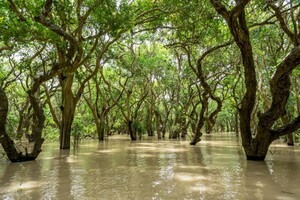Researchers insist on the need to preserve mangrove forests.

Scientists announced that they managed to find another the reason why it is important to protect mangroves. According to them, Mexico's mangrove forests have “silently” trapped greenhouse gases for 5,000 years, reports Phys.org.
Mangroves live in conditions that most trees cannot withstand: the salty shallows of coastal areas. Some species have vertical roots that hang from the air and act as “tubes” during high tides. Because of this, the trees look as if they are moving on stilts.
Read also: No matter how much we talk about reducing greenhouse gas emissions, they do not decrease.
Scientists from the University of California, Riverside and the University of California, San Diego decided to test how mangrove forests growing in Mexico absorb and release nitrogen and carbon. Because these processes are largely microbially driven, scientists wanted to know what bacteria thrived there.
The researchers admit they expected to find carbon in the peat layer beneath the forest, but they didn't expect the peat to be five thousand years old. . According to scientists, these mangrove trees are distinguished by the fact that they retain carbon for such a long time.
“This is several orders of magnitude more carbon stock than most other ecosystems in the region,” said lead study author Emma Aronson.
The peat beneath the mangroves is a combination of submerged sediments and partially decomposed organic matter. In some areas that the scientists studied during the study, the layer of peat reached about three meters below the coastal water line.
The deepest layer of sediments has little oxygen, apparently a large number of fungi were found there, which usually found in all environments of the Earth. But oxygen is necessary for most fungi that specialize in splitting carbon compounds.
More than 1,100 species of bacteria live under mangrove bushes, which consume and secrete various chemical elements. Many of them function in extreme conditions with little or no oxygen. However, these bacteria are ineffective in splitting carbon.
Related video
It is worth noting that there are other ecosystems on Earth that contain carbon of this age or even older. For example, Arctic and Antarctic permafrost. Maybe other mangrove forests.




